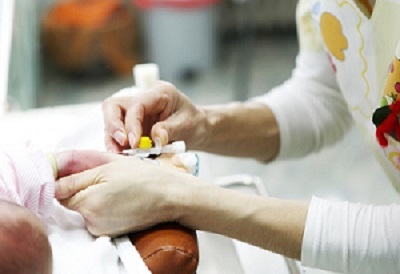In the neonatal intensive care unit (NICU), ill and preterm babies face a number of unpleasant and painful procedures, such as heel sticks to obtain blood samples, attachment and removal of EEG, or an eye examination. There are a number of methods how parents can help to reduce pain and anxiety in their baby, and a recent study from Finland1 examined the different methods, their benefits, and how widely they are practiced.
In previous studies, non-pharmacological methods have been shown to reduce pain in babies in mildly and moderately painful procedures2. Besides their effectiveness, they are considered to be safe as they do not have any adverse effects and are therefore recommended in particular for procedural pain management in infants. There are a number of non-pharmacological methods that parents can use to ease pain when their baby has to undergo medical procedures in the NICU. Some of them are already widely known and used by parents: touching or caressing the baby, holding the baby or putting the baby in a good position. However, the Finnish investigators found out, that other effective pain-relieving methods are sometimes not known and are therefore used less frequently. This concerns mostly:
– Breastfeeding before, during, and after a painful procedure
– Non-nutritive sucking (e.g. with a pacifier)
– Giving oral sucrose, a sweet solution, combined with sucking
– Swaddling
– Facilitated tucking
– Skin-to-skin care
– Playing music, singing or humming

(C) Shutterstock
According to the investigators, parents but also healthcare professionals need to improve their knowledge about all non-pharmacological methods. Since parent participation and cooperation in the NICU is very helpful and desirable, parents need to get more support from the healthcare professionals, as parents often struggle with their role in the NICU among nurses and doctors. Encouraging parents to get involved in the NICU does not only help in the development of the baby, but also facilitates the transfer of responsibility from nurse to parent when the baby gets better. According to the authors, an open and clear communication style is needed to make parents and healthcare professionals share responsibilities in the NICU.
1 Parents’ Use of Nonpharmacologic Methods to Manage Procedural Pain in Infants
Tarja Pölkki, Anne Korhonen, and Helena Laukkala
JOGNN, 47, 43–51; 2018. https://doi.org/10.1016/j.jogn.2017.10.005
2 Prevention and management of procedural pain in the neonate: An update.
Keels E, Sethna N, Watterberg KL, et al.
Pediatrics, 137(2), e20154271

